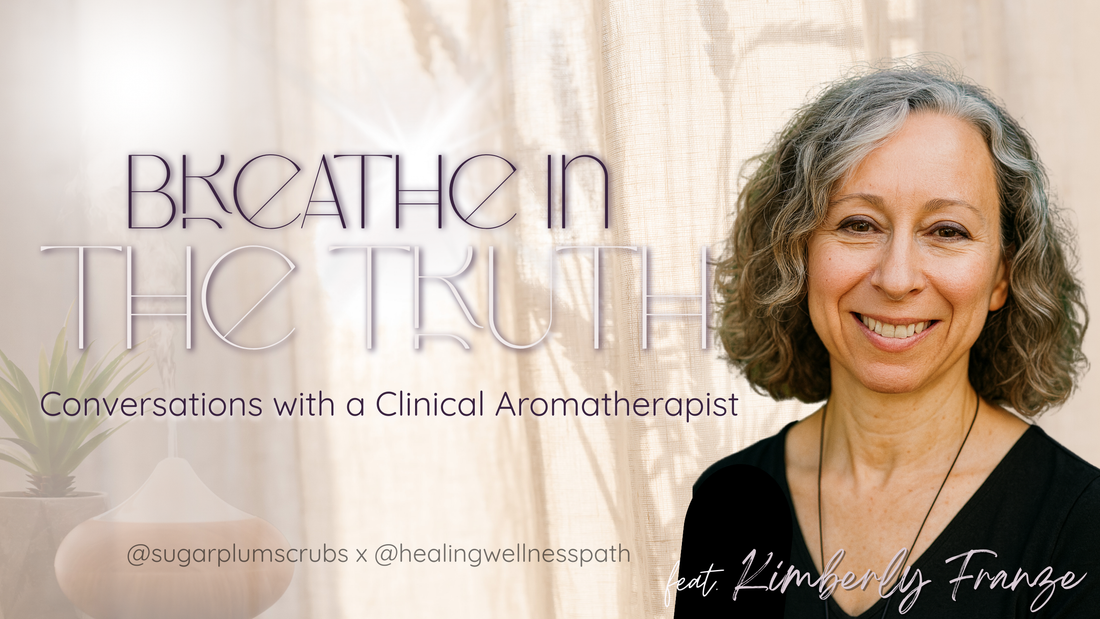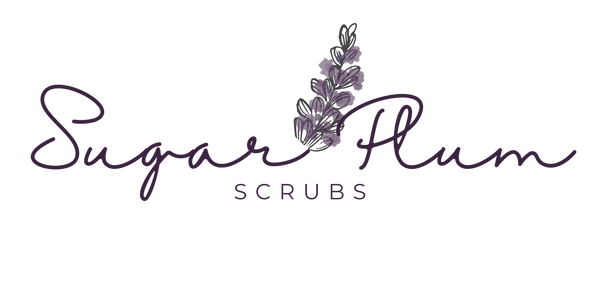
I Thought I Understood Scent. Then I Sat Down with a Clinical Aromatherapist.
I’ve always known that scent has power.
I’ve seen it unfold at our markets.
People leaning into jars of Sugar Plum Scrubs and suddenly closing their eyes, reliving. I've seen it in myself too. The way lavender steadies my breath or how citrus sharpens my focus. But for all the times I’ve worked with essential oils, grown lavender, blended scrubs and shared them with people in search of softness - I’ve never formally studied aromatherapy. Educated by the strong scent of lemongrass filling my aunt's living room, and delighted by the tea tree essential oil in my shampoo, I’ve begun to feel a desire to understand what scent really does to the body—what it can uncover, what it heals, and what happens when we use it without proper care.
That’s why I reached out to Kimberly Franze, a Certified Clinical Aromatherapist.
Meet Kimberly Franze, Clinical Aromatherapist
Franze began her career with a diploma in Environmental Technology and hands-on experience managing a microbiology lab. However, as a young mom, she transitioned into the financial industry, dedicating over 20 years to supporting her children. Eventually, Kimberly made the bold decision to step away from her career to prioritize her health and reconnect with her passion for natural healing. Franze is now my neighbor living in Glencoe, Ontario, a small town surrounded by trees, plants, and the kind of peace that doesn’t need explaining.
Why Aromatherapy?
Aromatherapy is more than just blending nice oils. It’s both an art and a science, carefully designed to support physical, emotional, and mental well-being. An aromatherapist, Franze explained, uses essential oils and plant-based materials to provide physical, emotional, and psychological support. Through various techniques like inhalation, topical application (through massage or diffusers), and sometimes baths, she’s seen essential oils improve mood, reduce stress, alleviate pain, and support overall wellness. Aromatherapy is rooted in science, requiring a deep understanding of plant therapeutics, their chemical properties, and how these concentrated extracts can impact our bodies and minds. She emphasized the importance of an aromatherapist’s knowledge of human anatomy, physiology, and pathology to ensure that the oils are used safely and effectively.
When Scent Heals… or Triggers
While working with an aromatherapist is “no substitute for a family doctor” it can create an experience that nurtures both body and mind. While carrier oils, hydrosols, and essential oils can be beneficial, scent can also be triggering. Our limbic system, responsible for processing both scent and emotion, can bring unwelcome memories and trauma to the forefront. Fun fact: when I display and sample the Lavender and Tea Tree Body Scrub, it’s not a welcome scent for people who have dealt with lice, whereas for others the herbal tincture like scent is a welcome and familiar comfort.
Why Sugar Plum Scrubs Rejects Synthetic Fragrance
Sugar Plum Scrubs was born as a rejection of the toxic chemicals and contaminants found in cosmetics, one of such toxic substances is fragrances. For this reason we specifically use essential oil blends like peppermint and lavender, or lemongrass and ginger to leave our customers smelling refreshed. Products with and without synthetic fragrance are fundamentally different. Synthetic fragrances don’t become your unique bodily essence, nor do they carry any therapeutic benefits. Franze pointed out that, while fragrance oils can be stronger in terms of smell, they often come with a hidden risk: unknown chemicals that could be harmful, especially when applied to the skin.
Wellness practitioners don’t always have the time to highlight that. Our clients love the energies, the aromas—but science can take the backseat to popular trends. And as someone who makes and shares products meant to support healing, I’ve also learned that no aroma is a substitute for important lifestyle changes.
Why I Want to Share This Series With You
I didn’t just speak with Franze to extract answers about essential oils, I spoke with her because I needed to hear from someone who’s made wellness a lifestyle in a specific and intentional way.
I’ve come to realize that my desire to share my blends with you is rooted in my wish to spread the enjoyment of the products and scents I love. However, my consultation with Kimberly helped me to understand the science. Your affinity for our products is deeply tied to culture, upbringing, identity, and, most importantly, your bodily chemistry. This is one version of Wellness in Practice and I invite you to subscribe to our newsletter Soul Care Sunday to learn and get updates on everything natural beauty, living and self-care.
If you’ve ever wondered why you’ve been layering on scent without feeling better, this series is for you.
In Part 2, you can expect to learn more about the most common essential oil myths, including why your strongest-smelling blend might be the least effective, how to know if the oils you’re using are even real and where to source the good stuff.
I invite you to explore your senses. To breathe this series in with curiosity.
Work with Kimberly
If you’ve ever used essential oils and felt unsure about the ‘how’ or the ‘why,’ I want to encourage you to book a session with Kimberly Franze. She offers 1:1 aromatherapy consultations starting at $75, and she brings a depth of care that I think so many of us are craving. Use code ‘SUGARGURU10’ for $10 off your first consultation.
📞 You can connect with her @healingwellnesspath on Instagram, YouTube, and Facebook. Visit her website Healing Wellness Path for more information
